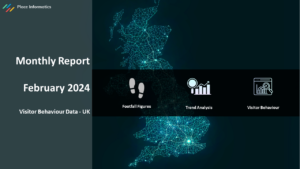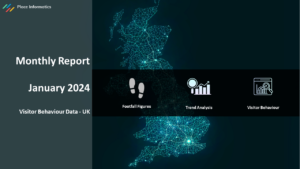Catchment area analysis is a strategic tool involving the visualisation of geographical data from which a retail store or shopping centre draws its customers. This analysis involves identifying and understanding consumer demographics within the local catchment, their travel willingness, and preferences in product range, pricing, and marketing channels.
By evaluating aspects such as the population’s age distribution, income levels, purchasing habits, and travel patterns, retailers can gain valuable insights into who their customers are, how far they are willing to travel, and what products or services they are likely to purchase. This information is crucial for retailers making strategic decisions about store location, product offering, and marketing strategies, ultimately aiming to attract more customers and increase sales.
Why is catchment area analysis beneficial?
Catchment area analysis, sometimes referred to as trade area analysis, provides a foundation for informed decision-making and strategic planning. In highly-competitive industries like retail, this analysis is critical for understanding market dynamics, enhancing customer engagement, and driving growth. Some key reasons why this analysis is vital include:
Socio-Demographics
Understanding the socio-demographic composition of a retail site’s surrounding area is a logical necessity. This involves gathering – and presenting visually – data on age, income, education level, and lifestyle preferences of the local population. These insights allow retailers to better understand the profile of their potential customers, including their spending habits and lifestyle needs. As we will explain, information like this is invaluable in tailoring the store’s product range, customer service, and overall shopping experience to meet the expectations and preferences of the local community.
Aligning Product Offering
Once a catchment area is fully understood, businesses can tailor their product offerings and services to meet the specific needs of their customers. By understanding the demographic profile, retailers can better predict which products will be in demand. For instance, a neighbourhood with a higher concentration of young families might require a wider range of children’s products, while an area with a larger elderly population might benefit from more healthcare and convenience products. A local convenience store in a city centre may stock different items than one in a residential area. This alignment not only increases sales, but evokes a sense of consumer loyalty, catering specifically to a market’s needs.
Targeted Marketing
Catchment area data enables the creation of highly focused marketing campaigns that better resonate with the local audience. For example, advertising channels, visual messaging, and promotions can be tailored to suit the preferences, income levels and behaviours of the catchment area’s demographic. A campaign that appeals to young urban professionals, for instance, might be very different in its approach from one targeting retirees. This targeting ensures more effective use of marketing budgets, higher returns on investment, and better serviced populations.
Strategic Location Planning
In planning store locations, catchment area analysis is instrumental in identifying the most lucrative locations for new retail sites or assessing the performance of existing ones. By analysing factors like population density, consumer footfall, economic status, and transport networks in a specific area, retailers can determine the potential success of a store in that location. This analysis helps in avoiding costly missteps by ensuring that new stores are opened in areas attractive to the target demographic and determines whether existing stores are positioned to best capture their market too.
Competitive Analysis
Retailers can assess how their offerings compare with those of nearby competitors and identify gaps in the market. This insight is crucial for developing strategies to differentiate their store, whether through unique product selections or more attractive price points. By understanding the competitive landscape, retailers can make strategic decisions to position themselves effectively in the market and attract more customers. Understanding the presence and impact of other businesses in a specific location can also serve to benefit your strategy, with numerous stores in close proximity becoming ‘destinations’ for consumers.
Conclusion
Catchment area analysis is an indispensable tool for any location-specific business, especially those in the retail and service sectors. It enables companies to understand their market better, align their offerings with customer needs, plan expansions more strategically, and execute tailored marketing campaigns. Understanding the catchment area is not just about knowing your customers’ geographic origins—it’s about gauging their needs, behaviours, and preferences and aligning your model accordingly.
Place Informatics is a market leader in location data analytics, using over a billion unique GPS data records to measure visitor behaviour and footfall in multiple locations across the UK. Our feature-rich dashboards and downloadable reports provide actionable insights into catchment demographic profiles, visitor origins and key indices including dwell, visit frequency and high street footfall. For more information or if you would like to schedule a demo you can book here.






